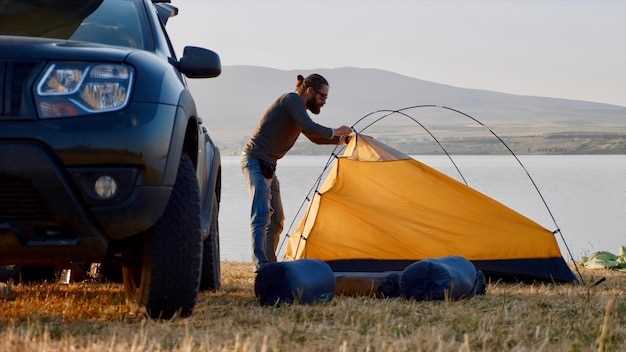
After an exhilarating day of off-road adventure, it’s crucial to focus on post-off-road maintenance for your Jeep. The rugged terrains, mud, and obstacles can take a toll on your vehicle, making it essential to ensure everything is in optimal condition. Neglecting proper maintenance can lead to costly repairs and reduced performance in future off-road excursions.
During your adventure, your Jeep is exposed to various elements that may not be immediately visible. From dirt accumulation to potential damage, each component of your vehicle needs careful inspection. Regular post-off-road maintenance not only enhances the lifespan of your Jeep but also ensures your safety on unpredictable trails.
This article provides essential tips to help you effectively maintain your Jeep after each off-road trip. By following these guidelines, you can enjoy peace of mind knowing that your vehicle is well-prepared for the next adventure, allowing you to focus on the thrill of the journey.
Inspecting and Cleaning the Undercarriage
After any off-road adventure, it’s crucial to prioritize maintenance of your Jeep, particularly by inspecting and cleaning the undercarriage. This area collects dirt, mud, and debris that can lead to corrosion and damage if not properly addressed.
Start by safely lifting your Jeep using jack stands or a lift to gain access. Always ensure you have adequate lighting to clearly see the undercarriage components. Begin your inspection by checking for any signs of damage such as dents, cracked components, or loose hardware. Pay special attention to the frame, suspension parts, and axle.
Next, use a pressure washer or a hose with a nozzle to remove accumulated mud and dirt. Focus on the nooks and crannies where debris can hide. A soft brush can help dislodge stubborn dirt without damaging sensitive parts. Make sure to clean areas around vital components like the fuel tank, brake lines, and electrical connections.
After rinsing, inspect for rust or corrosion. If any is detected, treat it immediately with a suitable rust inhibitor. Finally, consider applying a protective coating or undercoating designed to shield the undercarriage from moisture and road salts.
Regularly inspecting and cleaning your Jeep’s undercarriage will not only prolong its lifespan but will also enhance performance during future off-road excursions.
Checking Tires and Suspension Components

After an exhilarating off-road adventure, it’s crucial to thoroughly inspect your Jeep’s tires and suspension components to ensure optimal performance and safety. Begin with the tires, which endure significant stress on rough terrains. Look for any cracks, punctures, or bulges in the sidewalls and treads. Ensure that the tread depth is sufficient for traction; if it’s worn down, consider replacing the tires.
Also, check the tire pressure. Off-roading often involves lowering the tire pressure for better grip; make sure to inflate them back to the recommended PSI once you’re back on normal roads to prevent uneven wear. Don’t forget to rotate the tires regularly to promote even wear and extend their lifespan.
Next, examine the suspension components, as they bear the brunt of the bumps and jolts during off-roading. Inspect shock absorbers for leaks, and ensure they function correctly by pushing down on each corner of the Jeep–you should feel controlled resistance. Examine the springs for any signs of wear or damage, as well as the control arms and bushings. Loose or damaged components can affect handling and overall vehicle stability.
Finally, consider getting a professional inspection if you suspect any issues. Regular maintenance of tires and suspension components will enhance your Jeep’s longevity and ensure a safe ride after every post-off-road outing.
Fluids and Filters: Essential Post-Adventure Checks

After an exhilarating post-off-road adventure, your Jeep requires careful inspection of its fluids and filters to ensure optimal performance and longevity. The rugged terrains can introduce dirt, dust, and debris, making these checks crucial.
Begin with the engine oil. Inspect its level and condition, looking for any signs of contamination. If the oil appears dirty or gritty, consider changing it along with the oil filter. Clean oil is vital for lubricating engine components and preventing wear.
Next, evaluate the transmission fluid. Off-roading can cause this fluid to overheat or become contaminated. Check for proper levels and clarity. If the fluid smells burnt or has a dark color, a flush may be necessary to maintain smooth shifting and transmission health.
Don’t overlook the coolant. Off-road conditions can put extra strain on the cooling system. Ensure the coolant level is adequate and inspect for any leaks or signs of corrosion. If the coolant looks rusty or murky, a complete flush and replacement may be required.
Finally, focus on the fuel filter. Off-road driving can stir up sediment that may clog the filter, leading to reduced engine performance. Regularly replacing the fuel filter is essential to maintain optimal fuel flow and engine efficiency.
After these fluid checks, ensure that all filters, including air and cabin filters, are clean and functioning correctly. A clean air filter enhances performance and fuel efficiency while ensuring a pleasant cabin environment.
Performing these essential post-off-road checks on your Jeep will help you catch potential issues early and keep your vehicle running smoothly for future adventures.




